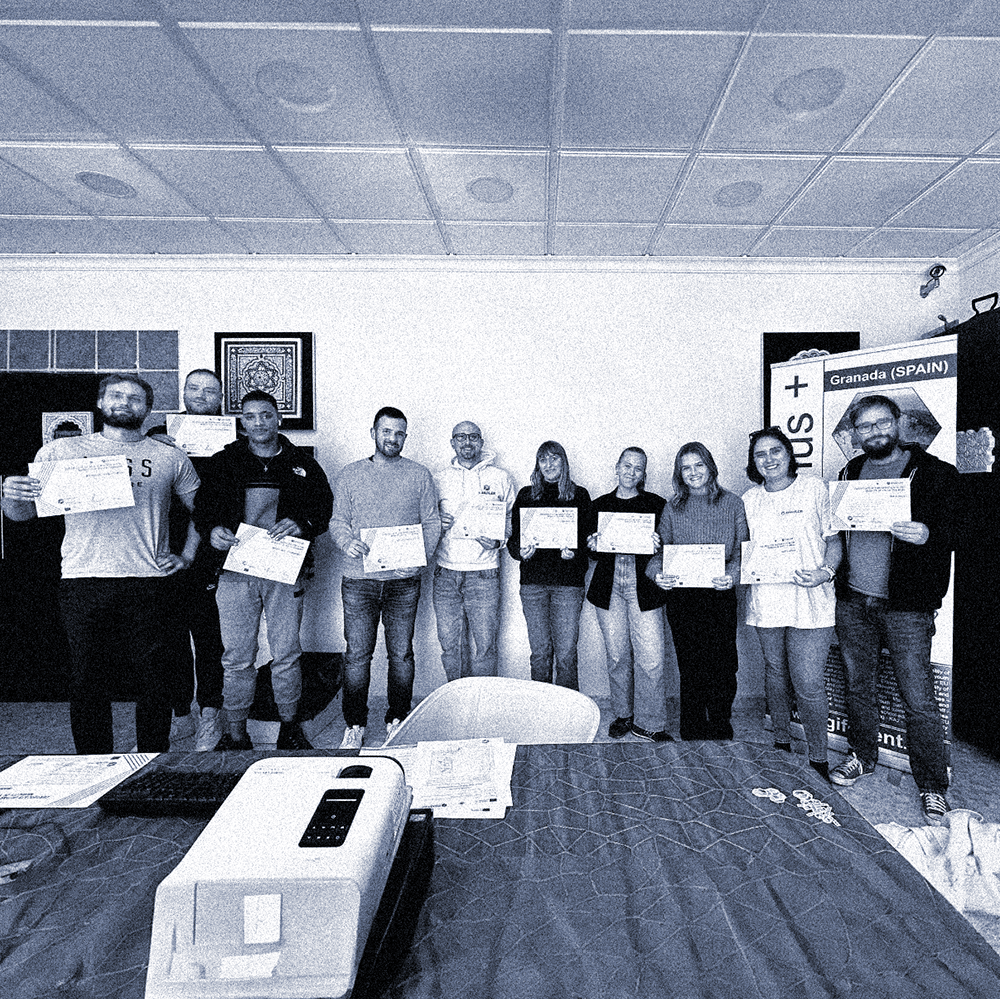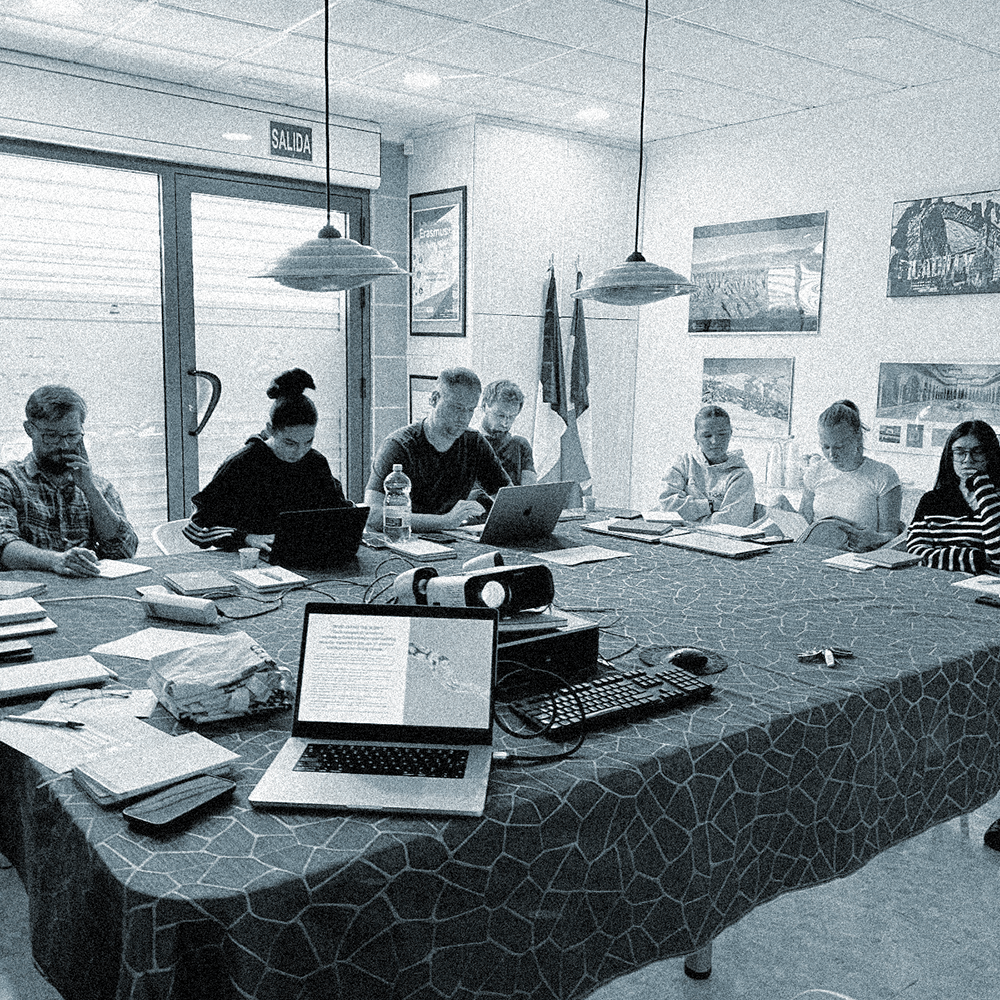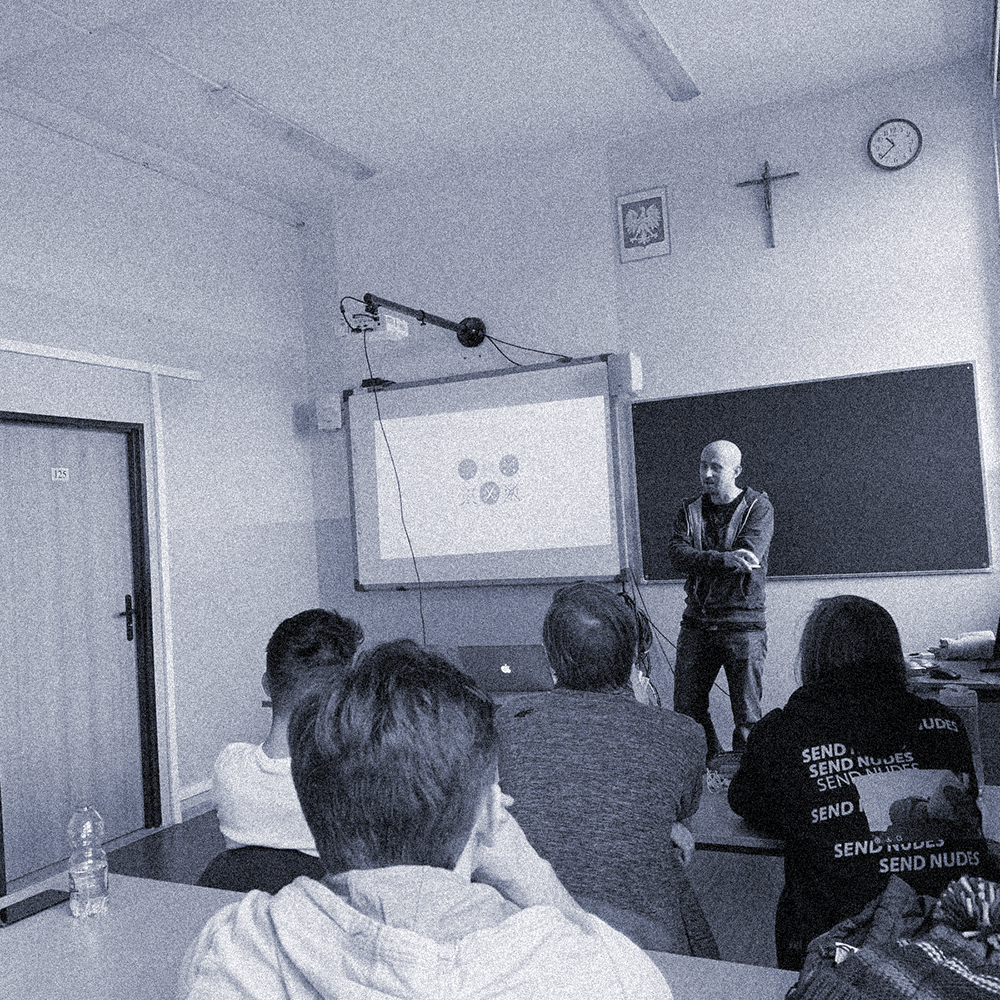
Technologies of tomorrow
Combating disinformation and building security capacity in the use of artificial intelligence by young people.
The project planned to carry out a six-day transnational mobility for youth trainers. The activities were carried out between 03.11.2023-08.11.2023 (6 working days). The location of the mobility was the applicant's headquarters, i.e. Grenada.
In summary, the activity was carried out as stated in the proposal, with 6 hours of didactic activities carried out each day.
The target group of the activity was in line with the submitted grant application. The mobility was attended by 12 youth trainers who work in the field of digital youth education on a daily basis.
Each of the project implementing partners seconded 6 staff members to participate in the activity.
The professional profile of the above-mentioned trainers is in line with the provisions of the application - partners selected people to participate in the activity who are digital skills trainers (IT specialists, graphic designers, cyber-security educators, educational staff, teachers).
The implementation of transnational mobility for youth trainers played a pivotal role in achieving the project's objectives. The primary goal of the project was to develop high-quality educational tools in the non-formal youth education sector, focusing on cybersecurity and the use of artificial intelligence. The effort aimed to equip young people, especially those with fewer opportunities, with the necessary skills and knowledge to navigate the digital world safely and effectively.
The mobility activity was the inaugural event of the project and served as a critical starting point for the collaborative work on the script.

The publication (Technologies of Tomorrow - combating disinformation and building security capacity in the use of artificial intelligence by young people) was developed according to the application's assumptions, with teams working together to create the script. The substantive work on the content lasted for three months (November 2023 - January 2024). Following this period, the content was tested through workshops for youth, using worksheets included as annexes. After this scaling process, corrections were made, and the work on the script was completed in May 2024.
The product was prepared in three language versions (Spanish, Polish, and English), and an open license was applied. The publication was designed to present various AI-based tools, emphasizing user safety, the ability to analytically and critically approach AI-generated content, and the skill of distinguishing fake news from facts. It also addressed legal and ethical issues related to AI use.
According to the application, the publication consists of five main parts that provide basic knowledge on the safe and wise use of artificial intelligence. These parts are complemented by a short introduction and summary, as well as seven worksheets for teenagers that youth trainers can use in educational work.
The introduction to the publication includes a brief historical overview of the culmination of work in artificial intelligence over the past few decades. The authors examine the most significant achievements of the 20th and 21st centuries. It then provides a simple explanation of the differences between models, along with an example classification of available AI models.
The first part (AI in Working with Text) is divided into three sections: Examples of Currently Available Models, Prompt – What It Is and How to Create It in Working with Text? Its Impact on the Quality of Responses, and Who Is the Author of a Text Co-Written with AI?
The second part (AI in Working with Images) was designed to provide a detailed presentation of the role and impact of artificial intelligence in image creation. The structure of this part is similar to the previous chapter, but this time it focuses on specific aspects related to images rather than text.
In the third part of the publication, titled "Other Interesting Examples of AI Services," we aim to show young people the potential of artificial intelligence in creating new forms of artistic expression and facilitating work in various fields.
The fourth part (AI – What Else Should We Know?) supplements practical information about artificial intelligence. The authors included information about generative AI and models that can improve themselves – "learn."
The main part of the publication (Safety and Combating Disinformation in the Context of Working with AI) focuses on the key aspects of safely using AI technology and strategies to counter disinformation. This section aims to equip readers with the knowledge and tools necessary for responsible AI use, highlighting both the potential and risks associated with its use.
The summary of the publication is divided into two parts. In the first part – "Are We in the Midst of a Revolution?" – we consider whether the current moment is indeed a historical breakthrough. The considerations conclude with the section "Potential Threats and Opportunities," where we emphasize that wisely used AI can be a source of enormous opportunities and possibilities for humanity. It is, after all, an example of the "technologies of tomorrow."

In January 2024, partners recruited 45 teenagers aged 15-19 each to participate in the project. The young people were divided into 5 groups of 9 participants each, where they participated in a series of workshops.
Each group took part in 7 three-hour workshops, the content of which was developed based on a previously prepared script (the workshops served as an opportunity to test the intellectual product of the project).
The following workshop topics were covered:
During the workshops, particular attention was paid to issues related to cybersecurity, image protection, critical approach to AI-generated content, and deepfakes. After each session, evaluations were conducted in both group and individual formats (surveys using digital tools, which collected material to improve the script).

Presentations that aid in conducting workshops for young people.
A couple of photos showing the activities during our mobility.